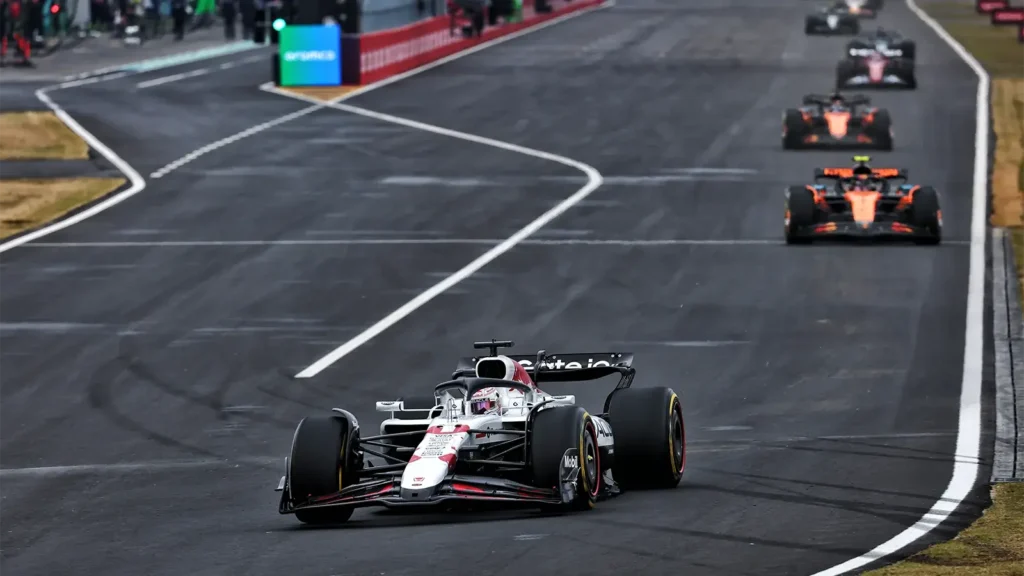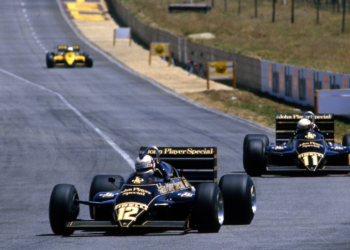McLaren Team Principal Andrea Stella argued Suzuka’s resurfacing dialled out the MCL39’s advantage at the Formula 1 Japanese Grand Prix.
The McLaren MCL39 enjoys a handy tyre preservation trait that makes it a potent weapon in race conditions.
However, a resurfaced Suzuka Circuit resulted in minimal degradation and effectively nullified McLaren’s advantage.
So, after Max Verstappen surprisingly pipped Lando Norris and Oscar Piastri to pole, McLaren didn’t have its trump card at play in the race to overcome the Dutchman.
With only one DRS zone, Suzuka doesn’t offer up an abundance of overtaking opportunities, and Stella told select media, including Motorsport Week, that, “we knew right from the start that on this track you need seven-eight tenths of performance advantage in order to overtake.”
In the past, this wasn’t an issue with Suzuka being a high degradation circuit, but as Stella pointed out, “with the new tarmac, Suzuka has changed the feature of being a high degradation circuit. It is now a very low degradation circuit.”
This nullified any advantage McLaren would have possessed in terms of tyre management, as the entire field could enjoy that as a positive.
All six drivers finished where they started in Japan, a first in F1 at a permanent circuit.
“I think I would have preferred old style Suzuka before the resurfacing, because in a situation like that, I think we could have exploited the good qualities of our car, but when the tyres behave so strong basically we have no additional qualities because everyone has a very low degradation,” Stella said.
“Hopefully Bahrain will be high deg.”

McLaren couldn’t recover from qualifying setback in F1 Japanese GP
Qualifying was crucial in Japan, and that’s when Verstappen’s race was won, with Norris and Piastri unable to improve upon their second and third-place starting berths.
“Hats off to Max and Red Bull at this track, there were some other variables that you may have at some other circuit that were not available,” Stella said.
“Like there was no tyre degradation so you can’t do very much. No overtaking, so once for instance, you nail the qualifying laps like Max did yesterday, then it gets a little bit difficult to get out of the rabbit hole.”
Stella hopes that future circuits on the F1 calendar will offer more degradation, at the very least to make for a more entertaining spectacle for the watching fans.
“So hopefully not all the circuits will be, let’s say, this level of degradation even because for the spectacle it just creates some processions to some extent,” he said.
“Also, hopefully, at some other circuits we will be in condition to use the full potential of the car, which I think still remains the best car.
“We need to work, and this is not only the drivers; this is above all a message for the team, we need to nail all the opportunities that ultimately deliver performance.”
No deg highlighted F1’s dirty air problem in Japan
Compounding matters was the fact that dirty air has become a greater issue in 2025.
Dirty air refers to the turbulent wake a car generates, which affects the following car closely, which is negatively impacted by the lack of clean airflow.
This reduces the aerodynamic performance of the chasing car, making it difficult to follow.
It’s a factor of F1 the series sought to eliminate with the introduction of 2022’s ground effect ruleset, but now, in the final year of the current regulation cycle, the pursuit of aerodynamic performance from the teams means dirty air has reared its ugly head once again.
Normally, tyre degradation can help offset this, but as Stella explains, that wasn’t applicable in Japan.

What the Italian hopes is that next year’s rule changes will effectively reset the effects of dirty air.
“Ultimately, we keep adding aerodynamic downforce, which means that the losses, you know, are even bigger, so I think the dirty air is a problem,” Stella explained.
“We have seen this even in China in terms of if you see [Lewis] Hamilton when he was in the lead of the sprint, he could do pretty much whatever he wanted, even if the tyre had damage.
“So the lead is a significant factor. Normally, the tyres add to [it] because there’s some circuits in which you degrade almost one tenth per lap and then if you have a better degradation then you can have… if you degrade 50 percent less in 10 laps you are half a second faster just because you degrade less for the tyres.
“But here this variable was not working because there was no tyre degradation.
“But I think the dirty air is a factor and possibly this is one of the reasons why the 2026 regulations may introduce some reset from this point of view because I think even if this generation of car was conceived to actually improve following, that was what we were talking about in 2022, there’s been so much aerodynamic development now that again they have become so much of an aerodynamic machine that as soon as you follow you lose the performance.”
Call for action
In the present moment, Mercedes’ George Russell has argued that tyre supplier Pirelli needs to have a hand in fixing F1’s degradation problem, with China exhibiting a similar issue prior to Suzuka.
“I think these last two weekends, I think the tyre compounds have just been too hard for resurfacing, and it’s been an easy one-stop both races, and that’s just really taken any fun from the strategy,” Russell said.
“Yeah, I hope we can maybe react as a sport, because it’s, as I said, we all finished where we started, and there just wasn’t enough difference in the tyre degradation.”
READ MORE – Max Verstappen makes bold McLaren statement following F1 Japan win









